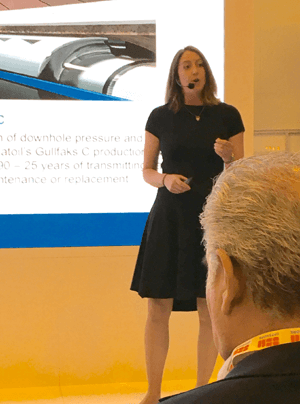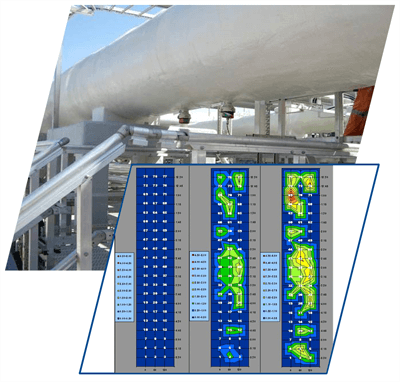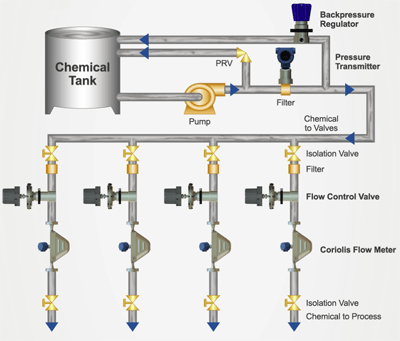Successfully and economically getting oil and gas from the reservoir to the point of sale is known as flow assurance. Wikipedia defines it as:
…extremely diverse, encompassing many discrete and specialized subjects and bridging across the full gamut of engineering disciplines. Besides network modeling and transient multiphase simulation, flow assurance involves effectively handling many solid deposits, such as, gas hydrates,[3]asphaltene, wax, scale, naphthenates, and emulsions.[4] Flow assurance is the most critical task during deep water energy production because of the high pressures and low temperature (~4 degree Celsius) involved.
 Emerson’s Laura Schafer discussed the challenges in flow assurance with hydrates, erosion and corrosion. In the U.S. alone, NACE International estimates the cost of corrosion in the oil & gas exploration and production industries to be $1.4 billion per year. This estimate includes costs associated with surface piping and facilities, downhole tubing and associated capital expenses.
Emerson’s Laura Schafer discussed the challenges in flow assurance with hydrates, erosion and corrosion. In the U.S. alone, NACE International estimates the cost of corrosion in the oil & gas exploration and production industries to be $1.4 billion per year. This estimate includes costs associated with surface piping and facilities, downhole tubing and associated capital expenses.
 Chemical injection systems to control corrosion often have issues with injection rate drifts, plugging, frequent maintenance, large turndown requirements, the space and weight these systems take up. So what are ways to improve system reliability, reduce chemical costs, increase operational efficiency and reduce safety risks caused by the corrosion?
Chemical injection systems to control corrosion often have issues with injection rate drifts, plugging, frequent maintenance, large turndown requirements, the space and weight these systems take up. So what are ways to improve system reliability, reduce chemical costs, increase operational efficiency and reduce safety risks caused by the corrosion?
The answer is in improving monitoring, management and control. By accurately measuring well production rates through a multiphase flow meter, chemical injection rates can be adjusted based on these flow rates in realtime. Subsea and topside intrusive and non-intrusive monitoring is also available to quickly identify sand production and help to optimize the flow rates for sand-free production.
Reliable chemical injection can be achieved through better measurements and final control elements. This includes high-pressure Coriolis flow meters to measure the chemical injection rate and flow control valve engineered for offshore chemical injection.
The corrosion control process can be managed through a Fieldwatch system managing well pressures up to 15,000 psi.
For one oil & gas producers, adding this corrosion monitoring system including measurements, final control and system management reduced their corrosion chemical inhibitor spend more than 40%.
For a North Sea oil and gas producer, permanent installation of downhole pressure and temperature gauges have been operating for more than 25 years of uninterrupted service without any maintenance or replacement performed.
If you’re in Houston this week for the 2016 Offshore Technology Conference (OTC), make sure to speak with our produced fluids management experts. Register to receive a complementary OTC day pass for more on this and other oil and gas solutions.
You can also connect and interact with other oil and gas experts in the Oil & Gas group in the Emerson Exchange 365 community.


